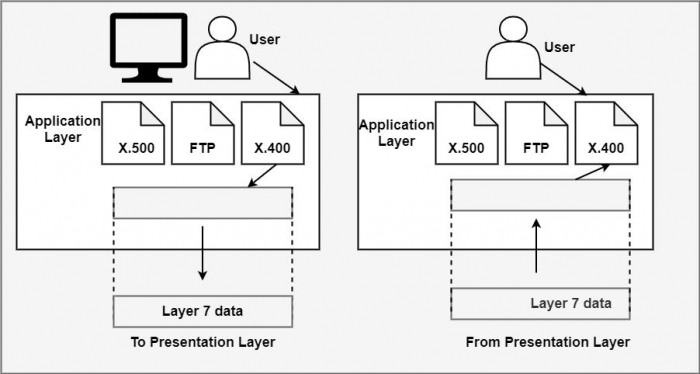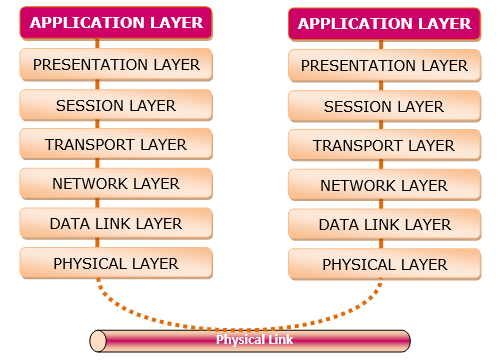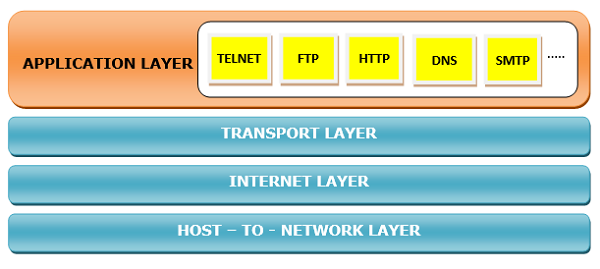APPLICATION LAYER IN OSI MODEL (EXPLNATION)
WHAT IS APPLICATION LAYER :
WATCH VIDEO FOR DETAILED EXPLNATION :
(PART-1) : WHAT IS APPLICATION LAYER AND FUNCTION OF APPLICATION LAYER
- WHAT IS APPLICATION LAYER
- WHAT IS APPLICATION LAYER IN OSI MODEL
- WHAT IS APPLICATION LAYER IN TCP/IP PROTOCOLS
This is the highest layer of the Open System Interconnection (OSI) architecture. The application program's layer view is a user-oriented layer that offers the services to the end-user of a web.
A message to be transmitted across the web introduces the OSI model and then traverses down into the physical layer. This is followed by sending a line up to the physical layer of destination and then upwards up to the receiver end system's application layers.
It offers services that support customer applications, including database creation, messages, and document transfer.
There are famous application layer protocols are X.400 (Electronic Mail Protocol), X.500 (Directory Server Protocol), FTP (File Transfer Protocol), and rlogin (Remote Login Protocol).
The figure given below demonstrates the connection of the application layer to the user and the presentation layer −

Functions of application layer
The functions of application layer are explained below −
User Interface: It represents the user interface to low-level layers and multiple application processes.
Security: It is responsible for the execution of the security tests at the user entity points.
File Transfer: The application layer supports the file transfer access and management (FTAM). It enables customers to create files in a remote system to retrieve the documents from a remote system and to handle or control the files in a remote system.
E-mail: It supports a basis for email forwarding and string.
Database Access: It supports distributed database sources and global data about several objects and functions.
Addressing: It is used for the connection between user and server. There is a requirement for addressing. When a user requests the server, the request includes the server address and its address. The server responds to the user request and the request consists of the destination address, i.e., client address.
Directory Services: An application includes a distributed database that supports the global data about multiple objects and functions.
The application layer (Layer 7) is the topmost layer of the OSI model. It specifies the interfaces and supports services to the end users for network access.
The main functions of the application layer are as follows −
- It provides a virtual network terminal through which a user can log on to the remote host on the network.
- It provides facilities so that a user can access and retrieve files in a remote computer for local usage, as well as manage and store files on a remote computer from the local computer.
- It provides e-mail services.
- It helps to retrieve global information and services by providing access to distributed database resources.

THE APPLICATION LAYER IN TCP/IP PROTOCOL:
The application layer is the highest abstraction layer of the TCP/IP model that provides the interfaces and protocols needed by the users. It combines the functionalities of the session layer, the presentation layer and the application layer of the OSI model.
The functions of the application layer are −
- It facilitates the user to use the services of the network.
- It is used to develop network-based applications.
- It provides user services like user login, naming network devices, formatting messages, and e-mails, transfer of files etc.
- It is also concerned with error handling and recovery of the message as a whole.
This layer uses a number of protocols, the main among which are as follows −
- Hyper Text Transfer Protocol, HTTP − It is the underlying protocol for world wide web. It defines how hypermedia messages are formatted and transmitted.
- File Transfer Protocol, FTP − It is a client-server based protocol for transfer of files between client and server over the network.
- Simple Mail Transfer Protocol, SMTP − It lays down the rules and semantics for sending and receiving electronic mails (e-mails).
- Domain Name System, DNS − It is a naming system for devices in networks. It provides services for translating domain names to IP addresses.
- TELNET − It provides bi-directional text-oriented services for remote login to the hosts over the network.
- Simple Network Management Protocol, SNMP − It is for managing, monitoring the network and for organizing information about the networked devices.
The following diagram shows the transport layer in the TCP/IP protocol suite −





Comments
Post a Comment